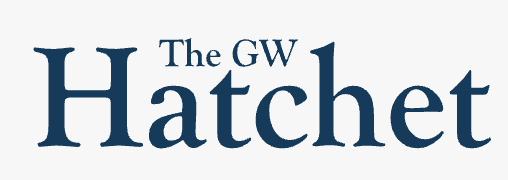Officials released a draft framework for the University’s first strategic plan since 2020 on Monday, outlining three “institutional priorities” set to launch this fall.
In an email to community members Monday, University President Ellen Granberg said faculty and officials worked throughout the spring semester to “synthesize” the four core themes the University identified in the fall as their primary focus when shaping the plan into three overarching institutional priorities and associated goals. Granberg announced in the email, which Provost Chris Bracey also signed, that officials are seeking feedback from the community before they present an updated draft to the Board of Trustees for their review and approval, with a projected fall launch.
“GW’s new strategic framework embodies our community’s shared vision and priorities, and we look forward to joining you as OneGW—aligned in support of our mission and resolved to achieve our highest aspirations,” Granberg wrote in the email.
The new strategic plan, dubbed OneGW, highlights three main priorities, including generating scholarship with impact, preparing students to be strong and resilient leaders and strengthening the University’s foundation for excellence. Under each priority, officials detailed between three and five goals they would use to help achieve each priority.
The website states that officials are hosting “community briefings” of the framework for faculty, students, staff and alumni spanning from April 23 to May 1, ahead of their May 5 deadline for community feedback on the framework.
Under the generating scholarship with impact priority, officials state they will work to remove organizational and financial “barriers” to interdisciplinary research, plan to make “strategic investigations” in faculty and will “actively engage” GW’s broad network of faculty and alumni to develop “impactful” programs.
Under the preparation of students to be strong and resilient leaders priority, officials write that they plan to create a “multiyear strategy” to meet the full demonstrated financial need of undergraduate students, invest in initiatives that deepen school spirit and expand GW students’ access to leadership and career development initiatives.
Officials in their third priority of strengthening the University’s foundation for excellence outline that they will build a “robust staff and administrative system” to help advance GW’s academic and research missions, create a “vibrant and welcoming” campus and develop a new budget model that supports GW’s “financial sustainability.”
Officials wrote on the strategic plan website that the framework will guide GW in its decision-making for the next five to seven years, and they plan to implement the framework in a “phased approach“ to ensure they make “intentional progress” while remaining adaptable to new opportunities and challenges.
“This framework will evolve as GW evolves, and your continued engagement is essential to ensuring that this document remains relevant, responsive, and reflective of our community’s highest aspirations,” the website reads.
The University has lacked a strategic plan since 2020 when officials dubbed former University President Thomas LeBlanc’s plan “obsolete” due to the COVID-19 pandemic, after critics of the plan said it lacked community input.
LeBlanc’s plan included a 20/30 initiative to cut undergraduate enrollment by 20 percent while increasing the University’s portion STEM majors to 30 percent, which was fiercely protested by faculty members who said the plan violated principles of shared governance and could lead to “major” cuts in funding to humanities departments.
Granberg announced the new strategic plan process last February by holding a series of discussions with students, faculty, staff and alumni to inform the strategic plan.
Bracey in April 2024 released a report of feedback from those conversations, which stated that community members recommended that the University should capitalize on its location in the District, develop a curriculum to address artificial intelligence and other workforce challenges, prepare students with skills for the job market, increase affordability and access to classes and leverage its alumni base.
Officials in September announced four “areas of focus” for the University over the next five to ten years, including expanding interdisciplinary research through methods like developing new applications for artificial intelligence to various areas of research and improving broad skills among students, like increasing their global perspectives and knowledge of data analytics and AI.
Other areas revolve around prioritizing professional development to train students to be “leaders” in their future careers through experiential learning opportunities and utilizing the University’s role as a “global convener” to engage with government agencies and other organizations to enhance public policy.
Officials also charged two committees last fall, including the Innovation Committee, who were tasked with collecting information from the GW community to identify opportunities for growth to include in the strategic plan and drafting a report summarizing their findings for officials.
They then charged the steering committee — composed of officials like Dean of Students Colette Coleman, Chief of Staff Scott Mory and Deputy Provost for Academic Affairs Terry Murphy — to review the Innovation Committee’s recommendations to assess the potential impact and feasibility of the framework suggestions.





